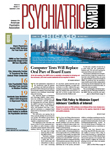If you ever saw the classic film, A Christmas Story, then you probably remember two of the film's most memorable characters—a big redheaded bully named Scut Farkus and his little dark-haired sidekick, Grover Dill.
Scut obviously didn't think very highly of Grover. Yet Grover helped Scut terrorize other youngsters because he wanted to curry Scut's favor. And that seems to be the case with bullies and their sidekicks in real life as well, a new study suggests. It found a link between adolescents' admiration of antisocial peers who did not admire them and the adolescents' commission of antisocial behaviors.
The study was conducted by Jaana Juvonen, Ph.D., chair of developmental psychology, and Alice Ho, a doctoral student in psychology studies in education, at the University of California at Los Angeles. Results were published in the July Journal of Youth and Adolescence.
The study included some 1,300 urban middle-school students from various ethnic backgrounds. The researchers evaluated, during the first semester of middle school—that is, during the first semester of sixth grade—which students their peers viewed as antisocial, which they viewed as “cool,” and which they viewed as both. The researchers gave statements describing antisocial behavior—for example, “starts fights or pushes other kids around” or “spreads nasty rumors about other kids.”
The researchers then tracked the students' antisocial behaviors throughout their middle-school years—that is, from sixth through eighth grades. (The tracking was done with the help of the students' teachers.) Finally the researchers, while taking gender and ethnic differences as well as students' initial levels of antisocial conduct into consideration, assessed whether there were links between students' views of antisocial peers at the start of middle school and their own antisocial behaviors later in middle school.
There was, the researchers found. The more often during the first semester of middle school that students rated those antisocial peers as“ cool” who did not reciprocate the rating, the more they engaged in antisocial conduct such as arguing, fighting, and bullying later in middle school.
In contrast, no link was found between students' admiration of antisocial peers during the first semester of middle school and students' later antisocial behavior if the antisocial peers also admired them during the first semester of middle school.
So it looks as if youngsters who admire antisocial peers who don't admire them in return engage in antisocial behaviors in order to be accepted by the latter, Juvonen and Ho concluded.
The study was funded by the National Science Foundation and the William T. Grant Foundation.
An abstract of “Social Motives Underlying Antisocial Behavior Across Middle School Grades” is posted at<www.springerlink.com/content/x09r228005575112?>.▪
